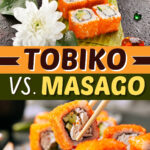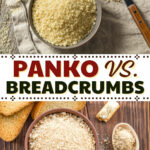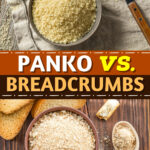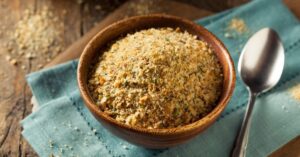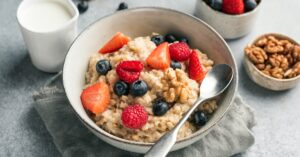Are panko and breadcrumbs the same thing, or is one superior?
Panko, hailing from Japan, offers a light and airy crunch. Breadcrumbs, a staple in Western kitchens, are versatile and time-tested.
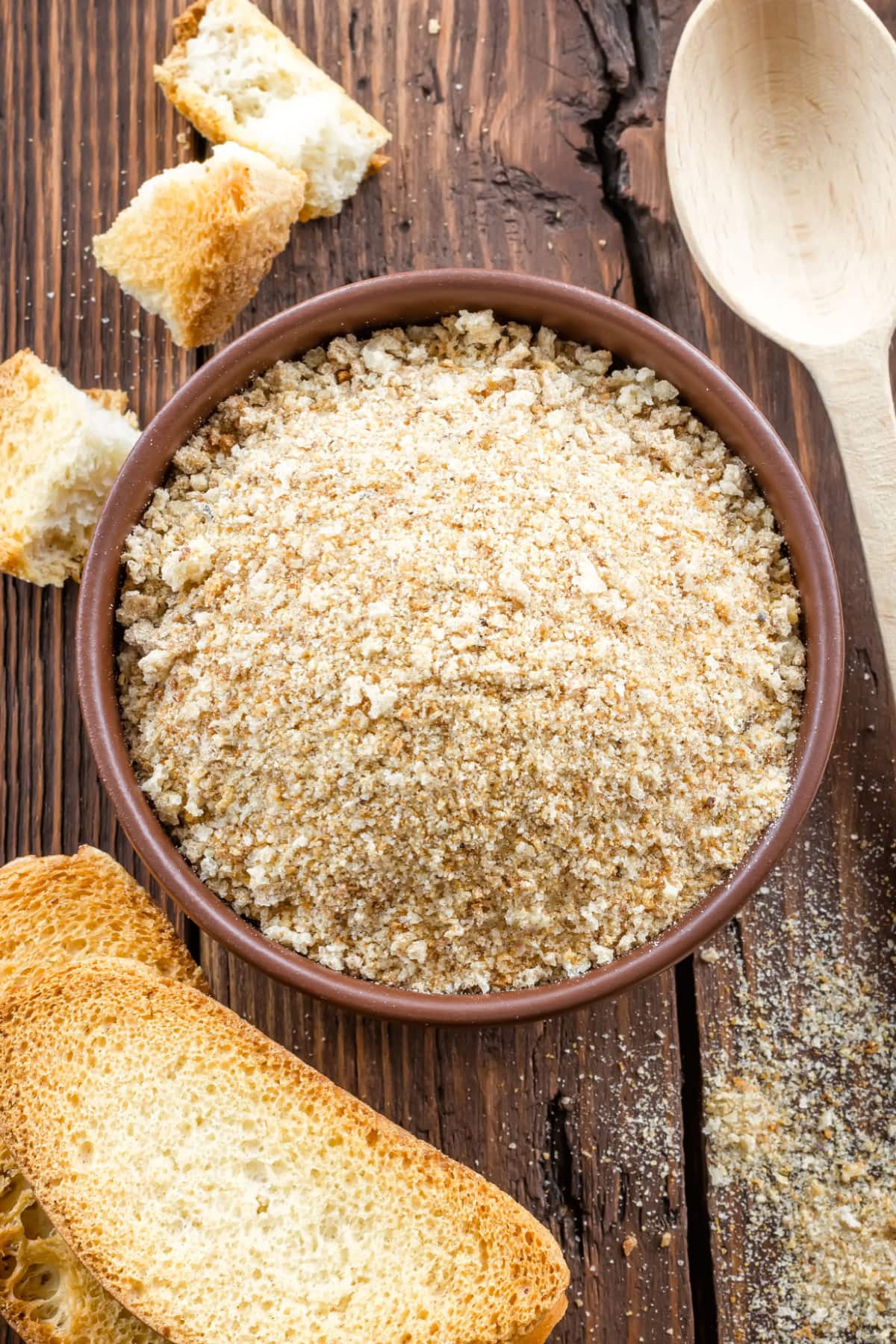
This battle has puzzled many a home cook. Should you use panko for your next casserole or fried recipe, or will classic breadcrumbs do the trick?
Knowing your ingredients is important in recipes where achieving the perfect crunch can make or break a dish.
We’ll explore the unique qualities and best uses for each.
Panko vs. breadcrumbs: let’s settle the debate once and for all!
Panko vs. Breadcrumbs (What’s the Difference?)
Panko is made from steamed, crustless loaves, resulting in a light, airy crunch. Traditional breadcrumbs are born from conventional loaves of bread.
Beyond that, these two staples also differ in appearance, crispiness, oil absorption, flavor, and ideal uses. Let’s take a closer look.
Appearance
Panko has a distinct, flaky appearance, forming longer, shard-like pieces with a unique crunch.
It’s made from steamed, crustless bread. Panko has a consistent, pale golden color without the darker flecks you find in breadcrumbs.
Breadcrumbs are much finer and powdery, resembling a sandy texture.
They come from regular bread with a crust. The crust gets ground along with the rest of the loaf. This results in various colors, from golden brown to deep amber.
Crispiness
Panko is the king of crunch. It’s a go-to choice when a super crispy, crackly texture is what you’re after.
This is because the bread used for panko is airier and contains more air pockets.
When panko is fried or baked, these air pockets allow it to develop a light yet crunchy texture. It stays crisp for an extended period.
Breadcrumbs have a denser, more uniform texture.
They might not deliver that same distinctive ‘crack’ that panko does when you bite into them.
Oil Absorption
When it comes to oil absorption, panko breadcrumbs take the crown.
Thanks to panko’s airy and flaky texture, it absorbs less oil than breadcrumbs. It’s extra light, crunchy, and less greasy.
Moreover, panko’s unique texture allows it to adhere beautifully to proteins, making it an ideal choice for breading.
With less oil soaking into the breading, fried foods retain their crispy exterior longer without turning soggy.
Type of Bread
The type of bread used to make panko and traditional breadcrumbs is a crucial difference between the two.
Regular breadcrumbs can be made from various types of bread. This includes wheat, white, and other baked slices of bread.
Panko breadcrumbs are specifically made from white bread or a gluten-free alternative.
They’re crafted from crustless loaves baked using an electric current, resulting in lighter and airier bread. This process also contributes to panko’s signature flaky and crunchy texture.
Flavor
Panko has a more neutral and less pronounced flavor. This is mainly because it is made from crustless white bread.
This lack of crust means panko doesn’t have the slightly caramelized flavor present in regular breadcrumbs.
Best Uses
Breadcrumbs and panko can be used interchangeably in many recipes. But they have standout uses due to their unique textures.
Panko is exceptional as a crunchy topping for baked casseroles, such as mac and cheese.
It also makes an ideal coating for fried foods, ensuring a crispier, crunchier result. It’s a staple in Japanese cuisine, often used for dishes like tonkatsu.
Breadcrumbs excel as a binder in recipes like meatballs or meatloaf, where a more subtle, cohesive texture is desired.
They, too, can add a crunchy topping to casseroles or serve as breading, but they yield a denser, less airy crust than panko.
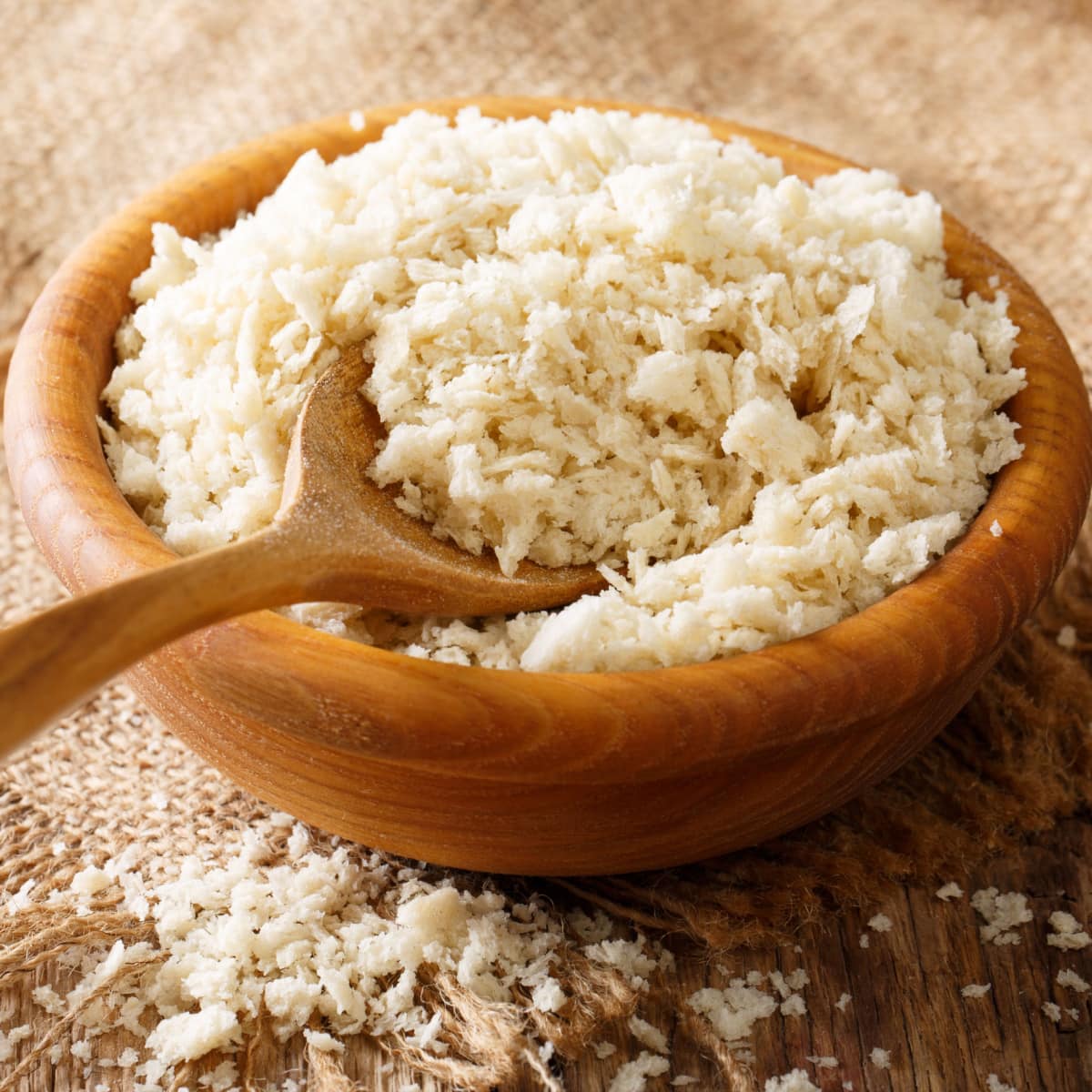
What Is Panko?
Panko is a unique type of breadcrumb used extensively in Japanese cuisine.
The term “panko” is derived from two Japanese words: “pan,” which means bread, and “ko,” which translates to crumbs, flour, or powder.
So, “panko” literally translates to “bread crumbs” or “bread flour.”
Unlike traditional Western breadcrumbs, panko is made from steamed, crustless loaves of bread.
These loaves are then processed into large, flaky crumbs and dried. This process produces lighter, airier, and more absorbent breadcrumbs than their Western counterparts.
They’re excellent for achieving a crispy, crunchy texture that doesn’t become soggy quickly when used in frying.
Panko is a staple in Asian cuisine, including iconic Japanese recipes such as chicken katsu, tonkatsu, and shrimp tempura.
But its applications extend beyond frying.
For example, panko can add a crunchy topping to casseroles or crab cakes, offering a crisp texture without frying.
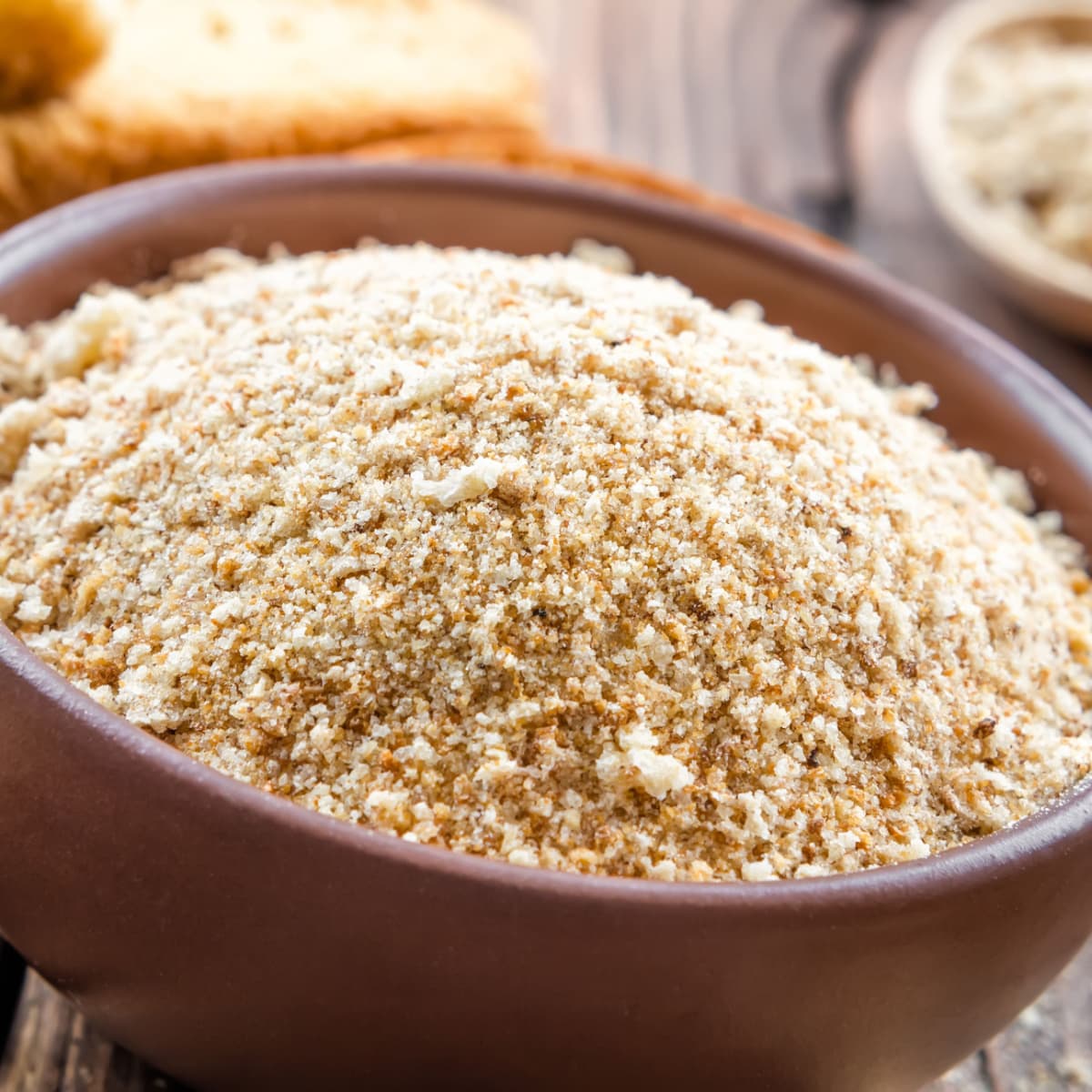
What Are Breadcrumbs?
Breadcrumbs are made from crumbled, dried, or processed bread.
The type of bread used to make breadcrumbs varies significantly. Options include white, rye, sourdough, and whole wheat flour.
Making breadcrumbs at home is a simple process.
- First, dry slices of your choice of bread (either in the oven or air-dried).
- Crumble or process them into your desired consistency using a food processor.
While you can control the size of your homemade breadcrumbs, they will be more finely ground than panko.
You can use them to bind ingredients in meatballs and meatloaf or as a crispy coating to baked or fried dishes.
Or, sprinkle them as a finishing touch over casseroles and pasta bakes.
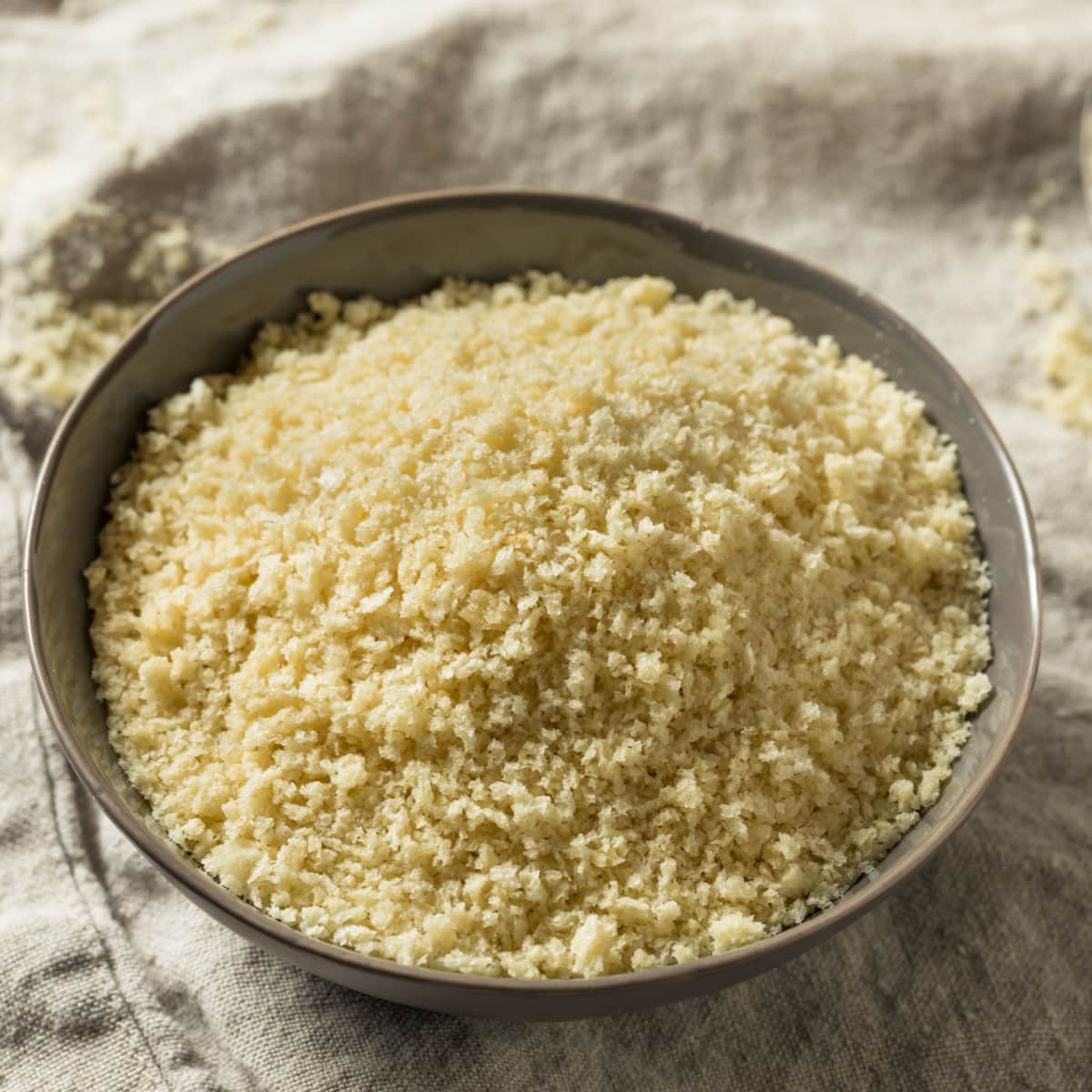
Can You Substitute Panko for Breadcrumbs and Vice Versa?
Certainly!
Panko and breadcrumbs are interchangeable when you need a binder for recipes like meatballs or veggie burgers.
However, panko takes the crown when it comes to toppings and coatings.
Its light, flaky texture makes fried and baked dishes stand out with enhanced crispiness.
Plus, panko tends to absorb less oil, making your dishes feel lighter while delivering that perfect crunch.



